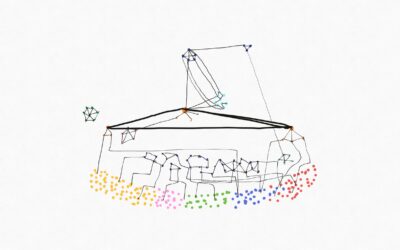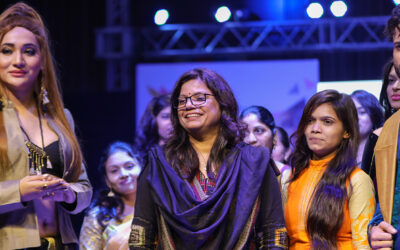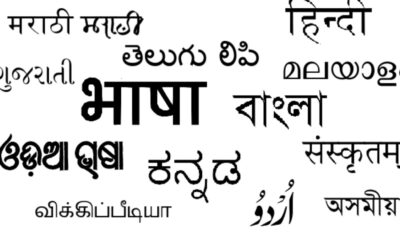Most of my time spent in Kutch is with the communities on urban Bhuj, specifically slum areas. I go for regular visits to their places to meet the Kishoris (adolscent girls). As part of my project with Kutch Mahila Vikas Sangathan (KMVS), we work towards the empowerment of Kishoris.
One third of the areas I visit are inhibited by Devipujaks which translates to worshippers of Devi. I got in touch with this samaj (community) because of my nature of work. While understanding the kishoris, I got a chance to know about the details of the Devipujak samaj. They welcomed me into their homes and lives. They let me be a part of their problems and allowed me to offer my perspective.
Devipujaks of Bhuj, at least the ones I met look strong, have sharp features, speaking eyes, a sense of great self-respect and an unmatchable energy storage in them. They are hardworking and jovial too. A community is built because of it’s past. I tried to understand why they are how they are!
Accessing information for them was difficult. Their rituals exist in the heart and mind of the people and are passed from generation to generation. The Samaj Panch are the watchers of the community and it’s rituals. The history of this samaj dates back to 200-250 years. They lived on the shores on Sindhu river in the province of Sindh and decided to migrate to escape the torture of the king on their women.
They first settled in Sanchor, in the Jalore district of Rajasthan and were known as Sanchoriya Waghri. Some of them further migrated to Vav and Tharad tehsil in Gujarat. Where they had relations with Sodha Darbar community. Some of them kept moving further via Ahmedabad and went to Halvad and Malia (Near Suraj Bari pul*) and came to Bhuj and were known as Kambadia Devipujaks here.
Why did they settle in Bhuj?
As told by Premji bhai, a Samaj Panch from the area – Currently there are around 650 households in 7 Vistars (areas) of Bhuj. Waghri-vada (now Shivramandap) being the oldest of them all, is the first area where this community set their foot. They were involved in the making of Desalsar lake and were given land by then Maharaja of Bhuj. That’s how around 140 families got shelter in Bhuj.


What was their actual occupation before migration?
Before migrating to Bhuj, the Devipukas used to sell Kam (teeth-cleaning twig in Sindhi) to earn a living. In Sindh their community was divided on the basis of nature of work they did. For example, Gamecha who sold balloons, Bansandiya sold wood/bamboo, Chimbadhiya sold muskmelon, Maddh sold honey.
What they did after the Desalsar project?
As told by the leaders of this community, the waghris in this region used to accompany the king for hunting and used to make decorative items for cattle like camel, ox and horse known as malothi and moyda. They also prepared items from jute.
But how waghris became Kambadiya Devipujaks ?
A Morarai bapu katha, (Morari Bapu is an indian spiritual preacher, who does Lord Ram’s preaching by katha vachan i.e. storytelling) gave them recognition as Devipujak. A suffix was added in their identity. Morari Bapu recognised a distinct characteristic of this community. These people worship Devi in abundance. Their culture revolves around Devi. Major life decisions are made as per the tradition honouring Devi.
Around 10 years ago, on the banks of Bhadar River near Rajkot, the community was named Devipujaks. Then onwards they got registered in government documentation as Kambadiya Devipujaks. While their earlier status of Waghri fell under the SC ST was shifted to Socially and Economically Backward Communities (SEBC) category. which bought in many complications for them as they still reside in slum areas of Bhuj.
What does their caste system looks like?
Their caste (in local language Atak) are also divided on the basis of Devi they worship. Premji kaka and other leaders told me they worship 9 avatars of Durga (which have different names in local language). Majorly they have following casts :-
Parmar- Mahakali Maa
Solanki- Mahakali Maa
Waghela – Meldi/Vihat Maa
Waghri Chauhan – Hadkui Maa
Sakhra – Meldi Maa
While writing these names, my curious mind tried to go and click the picture of the Goddess sculptures. In the attempt, I came to know women are not allowed to enter the shrines. Unmarried girls from the community have never seen how the Devi looks like.
What does Devipujak youth today looks like?
From what heard & observed, today youth from this community hangs between old customs and modern trends. They feel pride on their history but also suffocated in the customs imposed on the name of it. Their girls feel excited to get married as per the customs but are afraid of the circumstances that show later. Their young boys enjoy the power dynamics of patriarchy but feel chained in it. Devipujaks today are going through lot of transformational processes. And we all know transformation doesn’t come easy!




0 Comments